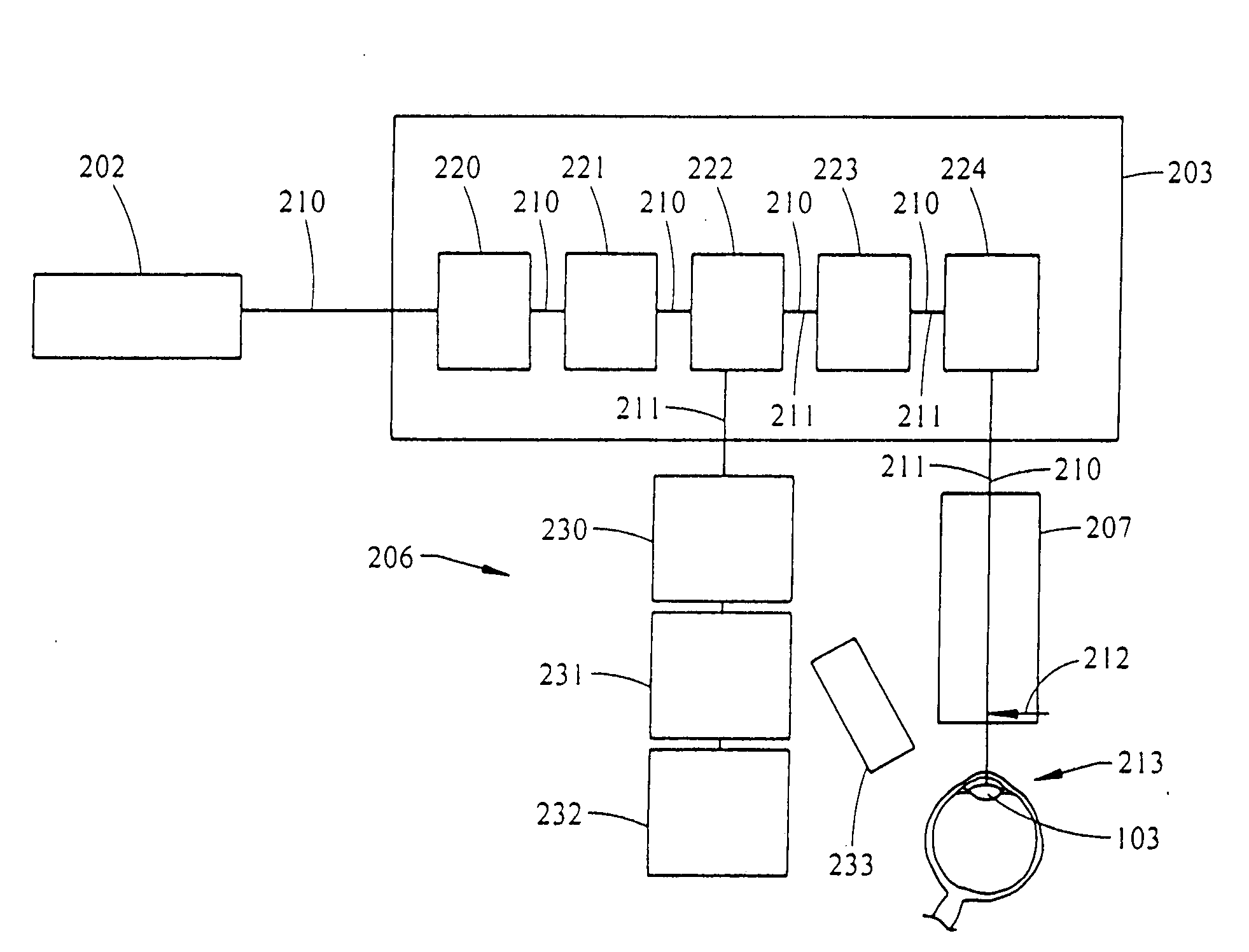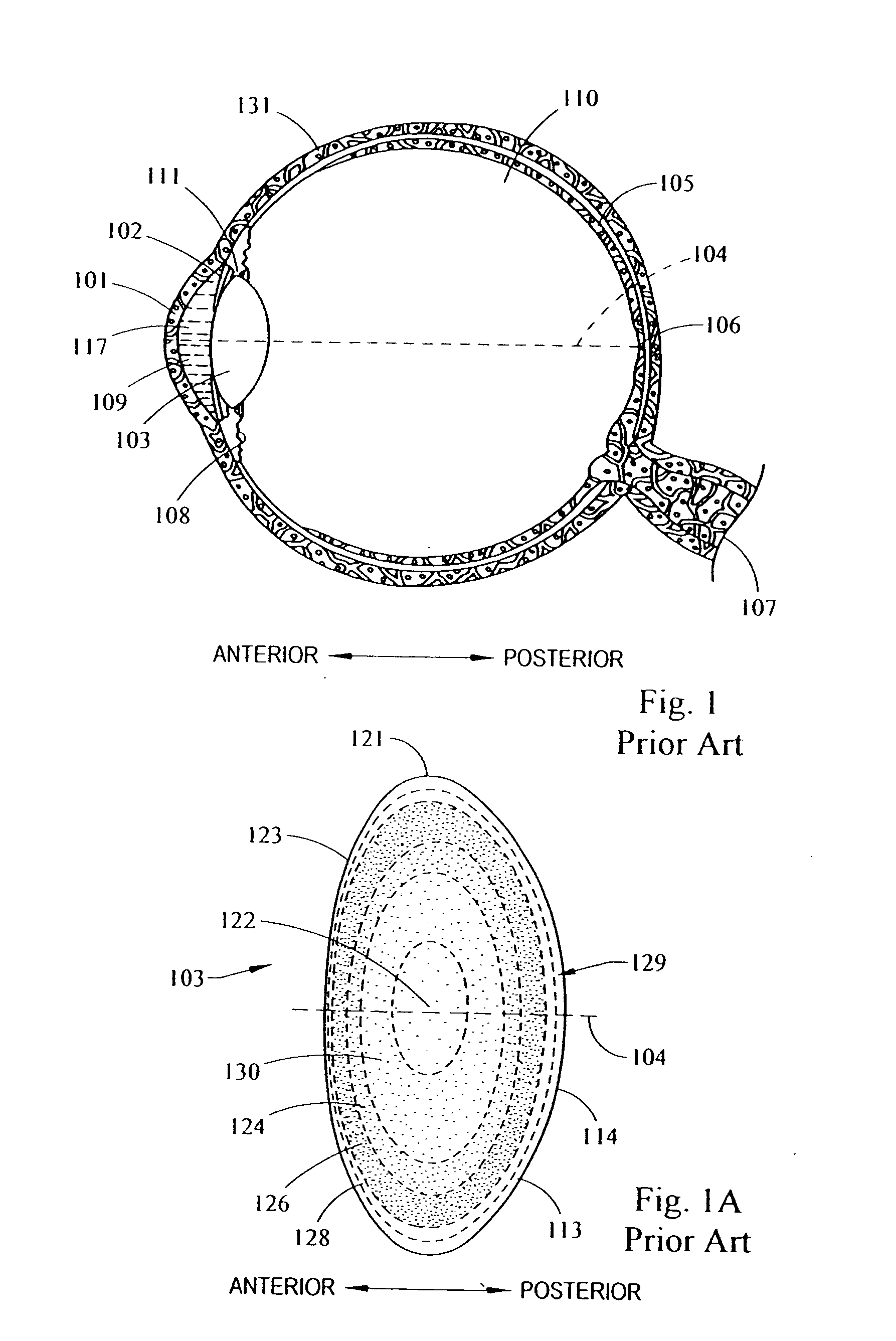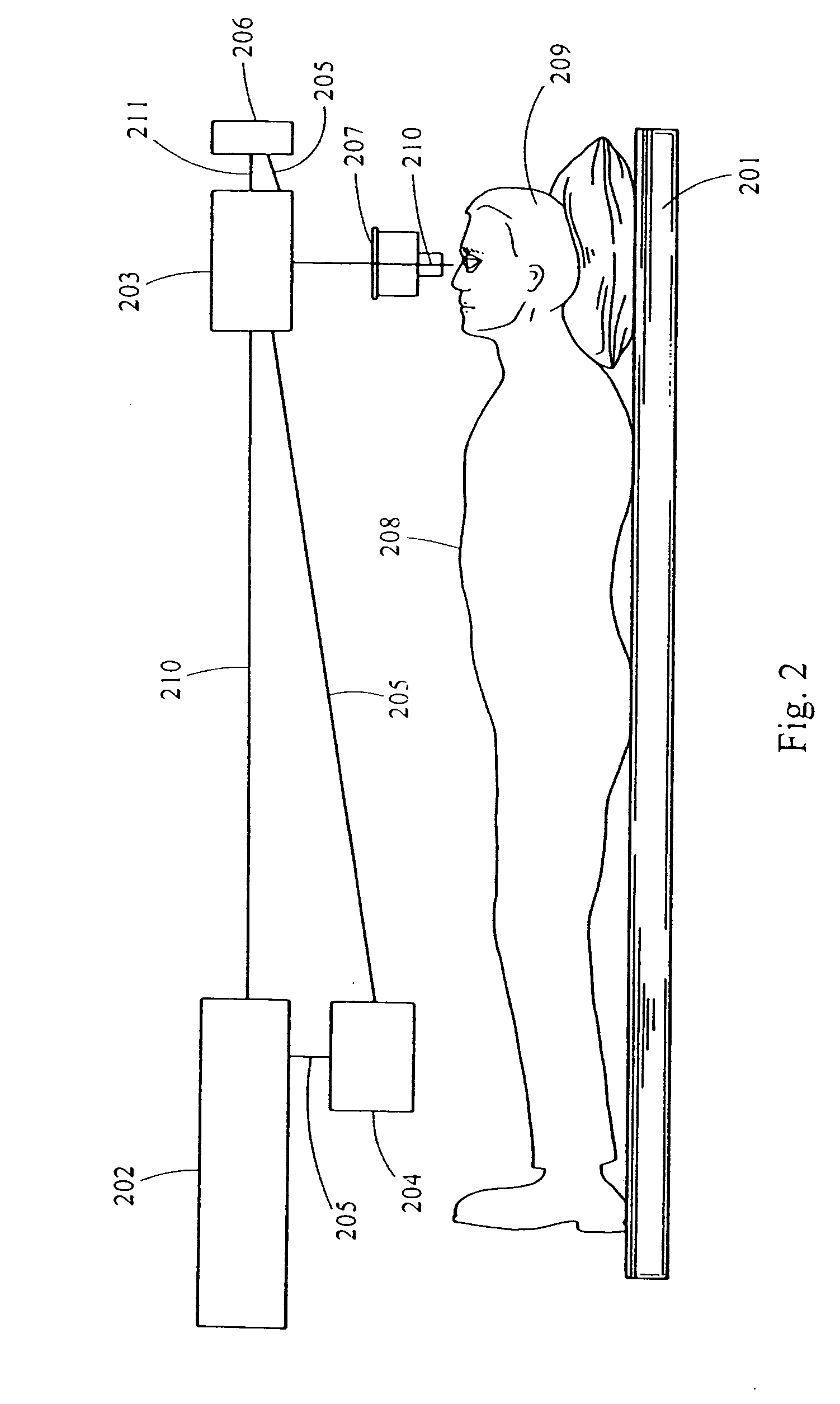System and method for improving the accommodative amplitude and increasing the refractive power of the human lens with a laser
a technology of human lens and amplitude, which is applied in the field of systems and methods for treating the structure of human crystalline lens with laser, can solve the problems of focus falling behind the retina, the size of the lens is not as large, and the refractive error is typically due, so as to reduce the rayleigh range effect and increase the probability of liob
- Summary
- Abstract
- Description
- Claims
- Application Information
AI Technical Summary
Benefits of technology
Problems solved by technology
Method used
Image
Examples
Embodiment Construction
provides for making of nested, lens shaped shell cuts in combination with cube shaped cuts. The laser shot patterns for this example are illustrated in FIG. 13. In this Figure there is shown the outer surface 1301 of a lens. There is further provided a series of nested or essentially concentric shells and shell cuts, which essentially follow the shape of the lens. Thus, there is provided annular shell cuts 1302, 1304, 1306, 1308, 1310, 1312, 1314, 1316, and 1318. Shell cuts 1302 and 1304 are positioned nearer to and follow the anterior surface of the lens, while shell cuts 1316 and 1318 are positioned nearer to and follow the posterior surface of the lens. Shell cuts 1306, 1308, 1310, 1312 and 1314 follow the entire curvature of the lens from anterior to posterior. The shell cuts form shells 1303, 1305, 1307, 1309, 1311, 1313, 1315, and 1317. These shells and shell cuts form annular structures but are illustrated in FIG. 13 in cross-section. As such, the shells or cuts on the left s...
PUM
 Login to View More
Login to View More Abstract
Description
Claims
Application Information
 Login to View More
Login to View More - R&D
- Intellectual Property
- Life Sciences
- Materials
- Tech Scout
- Unparalleled Data Quality
- Higher Quality Content
- 60% Fewer Hallucinations
Browse by: Latest US Patents, China's latest patents, Technical Efficacy Thesaurus, Application Domain, Technology Topic, Popular Technical Reports.
© 2025 PatSnap. All rights reserved.Legal|Privacy policy|Modern Slavery Act Transparency Statement|Sitemap|About US| Contact US: help@patsnap.com



